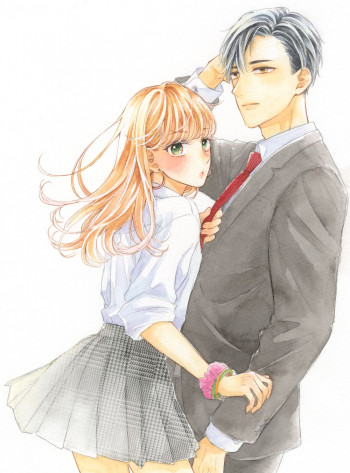
The Duchess' Replacement
by Scarlett Osborne
“You will follow my rules, little wife. Unless you enjoy being punished…”
Left at the altar, Sarah needs an explanation. Only, when she barges into the scoundrel’s home, it is not him she finds waiting…
Duke Charles never expected his brother’s jilted bride to show up on his doorstep. With one look at the defiant little minx, he knows exactly what she needs. Discipline. So he offers her a deal: Marry him instead and follow his rules to perfection.
1. She must not ask about his family.
2. She must not bother him without reason.
3. She must give him an heir.
Yet all it takes is breaking one rule, for Sarah to learn just how pleasurable a punishment can be…
*If you like a realistic yet steamy depiction of the Regency and Victorian era, then The Duchess’ Replacement is the novel for you.
.
Read
The Duchess' Replacement on http://kissnovel.net
Martial Peak Reviews
Scarlett Osborne’s The Duchess’ Replacement is a tantalizing foray into the Regency era, where societal norms and personal desires often clash with fervent intensity. The novel opens with a dramatic scene that sets the stage for a story filled with passion, power dynamics, and the complexities of human relationships. Sarah, the protagonist, is left at the altar, a scenario that immediately evokes sympathy and curiosity. Her decision to confront her would-be groom leads her to an unexpected encounter with Duke Charles, setting the narrative on a path of unexpected twists and turns.
Osborne crafts a vivid depiction of the Regency period, a time when societal expectations were both a guiding force and a restrictive cage. The author’s attention to historical detail is commendable, providing a rich backdrop that enhances the story’s authenticity. The setting is not merely a backdrop but a living, breathing entity that influences the characters’ actions and decisions. This meticulous world-building is one of the novel’s strengths, immersing readers in a time where the stakes of reputation and duty were incredibly high.
At the heart of the novel is the relationship between Sarah and Duke Charles. Their dynamic is complex and layered, driven by a mix of power, attraction, and the unspoken rules of their society. Charles is introduced as a character who embodies the archetype of the brooding, authoritative male, a staple in Regency romances. However, Osborne adds depth to his character by exploring his motivations and vulnerabilities, making him more than just a domineering figure. His rules for Sarah, which include not asking about his family and providing him with an heir, initially paint him as controlling. Yet, as the story unfolds, these rules become a lens through which readers can explore themes of control, freedom, and the negotiation of power within relationships.
Sarah, on the other hand, is a refreshing protagonist. Her initial portrayal as a jilted bride quickly evolves into that of a strong-willed and intelligent woman who is not afraid to challenge the status quo. Her defiance and resilience are central to the narrative, providing a counterbalance to Charles’s authority. The evolution of her character is one of the novel’s highlights, as she navigates the constraints placed upon her while asserting her own desires and agency. Her journey is both personal and relational, as she learns to negotiate her own terms within the confines of her marriage to Charles.
The chemistry between Sarah and Charles is palpable, and Osborne does not shy away from exploring the sensual aspects of their relationship. The novel is unabashedly steamy, with scenes that are both explicit and tastefully written. These moments are integral to the story, serving as a means of character development and a reflection of the shifting power dynamics between the two. The theme of punishment and pleasure is woven throughout, challenging traditional notions of discipline and submission. Osborne’s handling of these themes is nuanced, offering readers a chance to reflect on the complexities of desire and consent.
In comparison to other Regency romances, The Duchess’ Replacement stands out for its bold exploration of themes that are often glossed over in the genre. While it shares similarities with works by authors like Lisa Kleypas and Julia Quinn, Osborne’s novel delves deeper into the psychological and emotional aspects of its characters. The focus on rules and their transgression adds a layer of intrigue and tension that keeps readers engaged from start to finish.
However, the novel is not without its flaws. Some readers may find the initial premise—a woman marrying the brother of her jilted fiancé—somewhat implausible, even within the context of a romance novel. Additionally, the pacing at times feels uneven, with certain plot points resolved too quickly while others linger without sufficient exploration. Despite these minor issues, the strength of the character development and the richness of the setting more than compensate for any narrative shortcomings.
Overall, The Duchess’ Replacement is a compelling addition to the Regency romance genre. Scarlett Osborne has crafted a story that is both entertaining and thought-provoking, offering readers a chance to escape into a world of passion, power, and the eternal struggle for autonomy. The novel’s exploration of themes such as control, desire, and the negotiation of personal freedom within societal constraints makes it a standout read for fans of historical romance. Whether you are a longtime admirer of the genre or a newcomer looking for a captivating story, The Duchess’ Replacement promises to deliver a satisfying and memorable experience.
























Reviews 0
Post a Reviews: